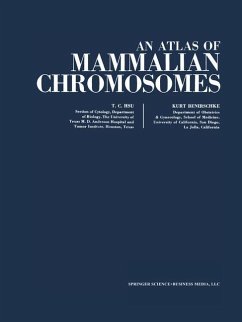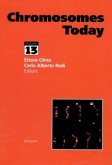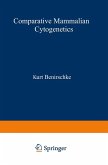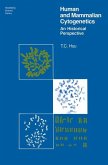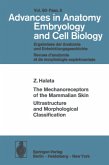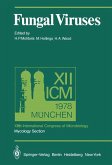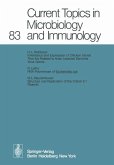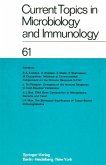Jetzt bewerten Jetzt bewerten
301 Trichosurus vulpecula (Vulpine phalanger).- 302 Notiosorex crawfordi (Desert shrew).- 303 Cynocephalus variegatus (Flying lemur) C. volans.- 304 Pteropus giganteus (Flying fox).- 305 Rousettus leschenaulti (Dog-faced bat).- 306 Taphozous longimanus (Tomb bat).- 307 Carollia castanea.- 308 Rhinophylla pumilio.- 309 Pipistrellus affinis.- 310 P. mimus (Pigmy pipistrelle).- 311 Funambulus pennanti (Indian five-striped squirrel).- 312 Glaucomys volans (Southern flying squirrel).- 313 Eliomys quercinus (European garden dormouse).- 314 Akodon orophilus (South American field mouse).- 315 …mehr
Andere Kunden interessierten sich auch für
301 Trichosurus vulpecula (Vulpine phalanger).- 302 Notiosorex crawfordi (Desert shrew).- 303 Cynocephalus variegatus (Flying lemur) C. volans.- 304 Pteropus giganteus (Flying fox).- 305 Rousettus leschenaulti (Dog-faced bat).- 306 Taphozous longimanus (Tomb bat).- 307 Carollia castanea.- 308 Rhinophylla pumilio.- 309 Pipistrellus affinis.- 310 P. mimus (Pigmy pipistrelle).- 311 Funambulus pennanti (Indian five-striped squirrel).- 312 Glaucomys volans (Southern flying squirrel).- 313 Eliomys quercinus (European garden dormouse).- 314 Akodon orophilus (South American field mouse).- 315 Mesocricetus brandti (Azarbaidjan hamster).- 316 Neotoma cinerea (Bushy-tailed wood rat).- 317 Ototylomys phyllotis (Big-eared climbing rat).- 318 Phodopus sungorus (Djungarian hamster).- 319 Sigmodon arizonae.- 320 Gerbillus cheesmani.- 321 G. gerbillus.- 322 G. gleaweri.- 323 Spalax ehrenbergi.- 324 Rattus exulans (Little rat).- 325 R. nitidus (Himalayan rat).- 326 R. rattus (Black rat).- 327 Vandeleuria oleracea (Palm mouse).- 328 Dolichotis patagonum (Cavie mara, Patagonian hare).- 329 Delphinus bairdii (Pacific dolphin).- 330 Orcinus orca (Killer whale).- 331 Tursiops truncatus (Bottle-nosed dolphin).- 332 Physeter catodon (Sperm whale).- 333 Alopex lagopus (Arctic fox).- 334 Vulpes fulva (American red fox).- 335 Cystophora cristata (Hooded seal).- 336 Halichoerus grypus (Grey seal).- 337 Pagophilus groenlandicus (Harp seal).- 338 Phoca vitulina (Harbor seal).- 339 Ceratotherium simum (White rhinoceros).- 340 Rhinoceros unicornis (Great Indian one-horned rhinoceros).- 341 Capricornis crispus (Japanese serow).- 342 Naemorhedus goral (Goral).- 343 Tragelaphus spekei (Sitatunga).- 344 Cervus unicolor (Sambar deer).- 345 Hydropotes inermis (Chinese water deer).- 346 Giraffa camelopardalis (Giraffe).- 347 Okapia johnstoni (Okapi).- 348 Saimiri sciureus (Squirrel monkey).- 349 Presbytis entellus (Entellus langur).- 350 Pan paniscus (Pigmy chimpanzee).
Produktdetails
Verlag: Springer / Springer New York / Springer, Berlin Artikelnr. des Verlages: 978-1-4684-7992-8 Softcover reprint of the original 1st ed. 1973 Seitenzahl: 264 Erscheinungstermin: 27. Juli 2012 Englisch Abmessung: 279mm x 210mm x 15mm Gewicht: 652g ISBN-13: 9781468479928 ISBN-10: 146847992X Artikelnr.: 37525280 Springer-Verlag GmbH Tiergartenstr. 17 69121 Heidelberg ProductSafety@springernature.com
Verlag: Springer / Springer New York / Springer, Berlin Artikelnr. des Verlages: 978-1-4684-7992-8 Softcover reprint of the original 1st ed. 1973 Seitenzahl: 264 Erscheinungstermin: 27. Juli 2012 Englisch Abmessung: 279mm x 210mm x 15mm Gewicht: 652g ISBN-13: 9781468479928 ISBN-10: 146847992X Artikelnr.: 37525280 Springer-Verlag GmbH Tiergartenstr. 17 69121 Heidelberg ProductSafety@springernature.com
Kurt Benirschke received his MD from the University of Hamburg in 1948 and subsequently moved to the United States, where he trained in pathology at different university hospitals. He held various Harvard Medical School appointments before becoming Professor of Pathology and Chairman of the Department of Pathology at Dartmouth Medical School in Hanover, New Hampshire, where his interests included placental pathology, comparative reproductive pathology, and comparative cytogenetics. In 1970, Dr. Benirschke became Professor of Pathology and Reproductive Medicine at the University of California, San Diego Medical Center. He established a genetics laboratory and ran the autopsy service at the Center, and also chaired the Department of Pathology for 2 years. In addition, he served as Director of Research at San Diego Zoo in a newly established research department. There, he established the first frozen zoo, comprising a collection of frozen cells and reproductive material from highly e
301 Trichosurus vulpecula (Vulpine phalanger).- 302 Notiosorex crawfordi (Desert shrew).- 303 Cynocephalus variegatus (Flying lemur) C. volans.- 304 Pteropus giganteus (Flying fox).- 305 Rousettus leschenaulti (Dog-faced bat).- 306 Taphozous longimanus (Tomb bat).- 307 Carollia castanea.- 308 Rhinophylla pumilio.- 309 Pipistrellus affinis.- 310 P. mimus (Pigmy pipistrelle).- 311 Funambulus pennanti (Indian five-striped squirrel).- 312 Glaucomys volans (Southern flying squirrel).- 313 Eliomys quercinus (European garden dormouse).- 314 Akodon orophilus (South American field mouse).- 315 Mesocricetus brandti (Azarbaidjan hamster).- 316 Neotoma cinerea (Bushy-tailed wood rat).- 317 Ototylomys phyllotis (Big-eared climbing rat).- 318 Phodopus sungorus (Djungarian hamster).- 319 Sigmodon arizonae.- 320 Gerbillus cheesmani.- 321 G. gerbillus.- 322 G. gleaweri.- 323 Spalax ehrenbergi.- 324 Rattus exulans (Little rat).- 325 R. nitidus (Himalayan rat).- 326 R. rattus (Black rat).- 327 Vandeleuria oleracea (Palm mouse).- 328 Dolichotis patagonum (Cavie mara, Patagonian hare).- 329 Delphinus bairdii (Pacific dolphin).- 330 Orcinus orca (Killer whale).- 331 Tursiops truncatus (Bottle-nosed dolphin).- 332 Physeter catodon (Sperm whale).- 333 Alopex lagopus (Arctic fox).- 334 Vulpes fulva (American red fox).- 335 Cystophora cristata (Hooded seal).- 336 Halichoerus grypus (Grey seal).- 337 Pagophilus groenlandicus (Harp seal).- 338 Phoca vitulina (Harbor seal).- 339 Ceratotherium simum (White rhinoceros).- 340 Rhinoceros unicornis (Great Indian one-horned rhinoceros).- 341 Capricornis crispus (Japanese serow).- 342 Naemorhedus goral (Goral).- 343 Tragelaphus spekei (Sitatunga).- 344 Cervus unicolor (Sambar deer).- 345 Hydropotes inermis (Chinese water deer).- 346 Giraffa camelopardalis(Giraffe).- 347 Okapia johnstoni (Okapi).- 348 Saimiri sciureus (Squirrel monkey).- 349 Presbytis entellus (Entellus langur).- 350 Pan paniscus (Pigmy chimpanzee).
301 Trichosurus vulpecula (Vulpine phalanger).- 302 Notiosorex crawfordi (Desert shrew).- 303 Cynocephalus variegatus (Flying lemur) C. volans.- 304 Pteropus giganteus (Flying fox).- 305 Rousettus leschenaulti (Dog-faced bat).- 306 Taphozous longimanus (Tomb bat).- 307 Carollia castanea.- 308 Rhinophylla pumilio.- 309 Pipistrellus affinis.- 310 P. mimus (Pigmy pipistrelle).- 311 Funambulus pennanti (Indian five-striped squirrel).- 312 Glaucomys volans (Southern flying squirrel).- 313 Eliomys quercinus (European garden dormouse).- 314 Akodon orophilus (South American field mouse).- 315 Mesocricetus brandti (Azarbaidjan hamster).- 316 Neotoma cinerea (Bushy-tailed wood rat).- 317 Ototylomys phyllotis (Big-eared climbing rat).- 318 Phodopus sungorus (Djungarian hamster).- 319 Sigmodon arizonae.- 320 Gerbillus cheesmani.- 321 G. gerbillus.- 322 G. gleaweri.- 323 Spalax ehrenbergi.- 324 Rattus exulans (Little rat).- 325 R. nitidus (Himalayan rat).- 326 R. rattus (Black rat).- 327 Vandeleuria oleracea (Palm mouse).- 328 Dolichotis patagonum (Cavie mara, Patagonian hare).- 329 Delphinus bairdii (Pacific dolphin).- 330 Orcinus orca (Killer whale).- 331 Tursiops truncatus (Bottle-nosed dolphin).- 332 Physeter catodon (Sperm whale).- 333 Alopex lagopus (Arctic fox).- 334 Vulpes fulva (American red fox).- 335 Cystophora cristata (Hooded seal).- 336 Halichoerus grypus (Grey seal).- 337 Pagophilus groenlandicus (Harp seal).- 338 Phoca vitulina (Harbor seal).- 339 Ceratotherium simum (White rhinoceros).- 340 Rhinoceros unicornis (Great Indian one-horned rhinoceros).- 341 Capricornis crispus (Japanese serow).- 342 Naemorhedus goral (Goral).- 343 Tragelaphus spekei (Sitatunga).- 344 Cervus unicolor (Sambar deer).- 345 Hydropotes inermis (Chinese water deer).- 346 Giraffa camelopardalis(Giraffe).- 347 Okapia johnstoni (Okapi).- 348 Saimiri sciureus (Squirrel monkey).- 349 Presbytis entellus (Entellus langur).- 350 Pan paniscus (Pigmy chimpanzee).

